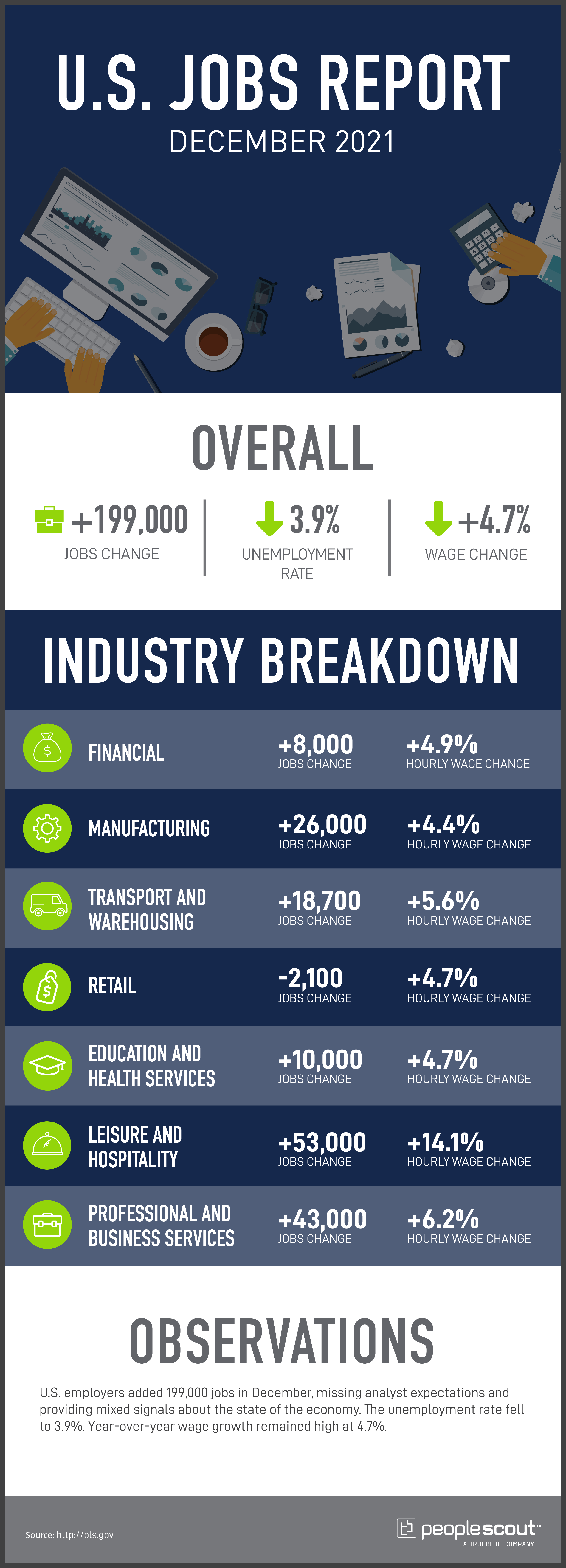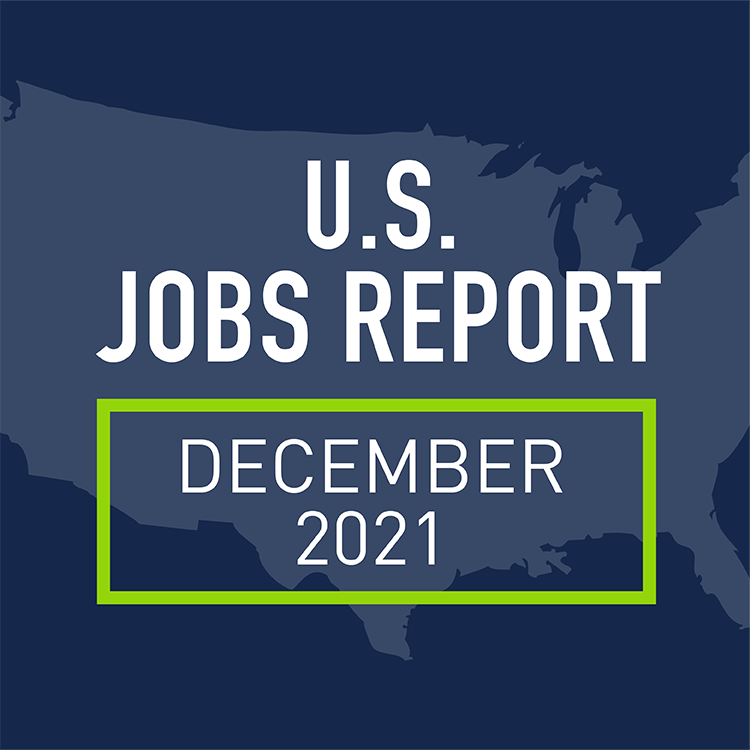U.S. employers added 199,000 jobs in December, missing analyst expectations and providing mixed signals about the state of the economy. The unemployment rate fell to 3.9%. Year-over-year wage growth remained high at 4.7%.

The Numbers
199,000: The U.S. economy added 199,000 jobs in December.
3.9%: The unemployment rate fell to 3.9%.
4.7%: Wages rose 4.7% over the past year.
The Good
While the headline of 199,000 jobs added in December is disappointing, other numbers in December’s jobs report point to good news. The unemployment rate fell to 3.9% faster than the Federal Reserve had predicted. Additionally, the New York Times reports that the labor participation rate rose to 61.9% in November and December, the highest rate since the pandemic started.
Additionally, the U.S. economy added 6.4 million jobs in 2021, the highest yearly increase on record.
The Bad
As MarketWatch reports, December’s increase in employment was less than half of what analysts had projected. Experts say the lower numbers were caused, in part, by the tight job market. To compete for workers, employers have raised wages significantly over the past year, with year-over-year wage growth hitting 4.7% overall, though some sectors, like leisure and hospitality, have seen even larger increases. Because December’s numbers are based off the first two weeks of the month, before the latest COVID-19 surge began, the Omicron variant likely only had a small role in the month’s numbers.
The Unknown
Looking ahead to 2022, the Wall Street Journal reports that workers continue to quit their jobs at record rates, and experts predict a potential disruption caused by the surging Omicron cases followed by a strong year of job creation. Economists say that while businesses have gotten better at responding to waves of COVID-19 cases, Omicron has caused millions of sick workers to quarantine. The resulting labor shortage has already led to canceled flights and temporarily closed restaurants. However, as demonstrated by a rapid drop-off in cases in South Africa, Omicron is expected to cause only a short-term disruption.



